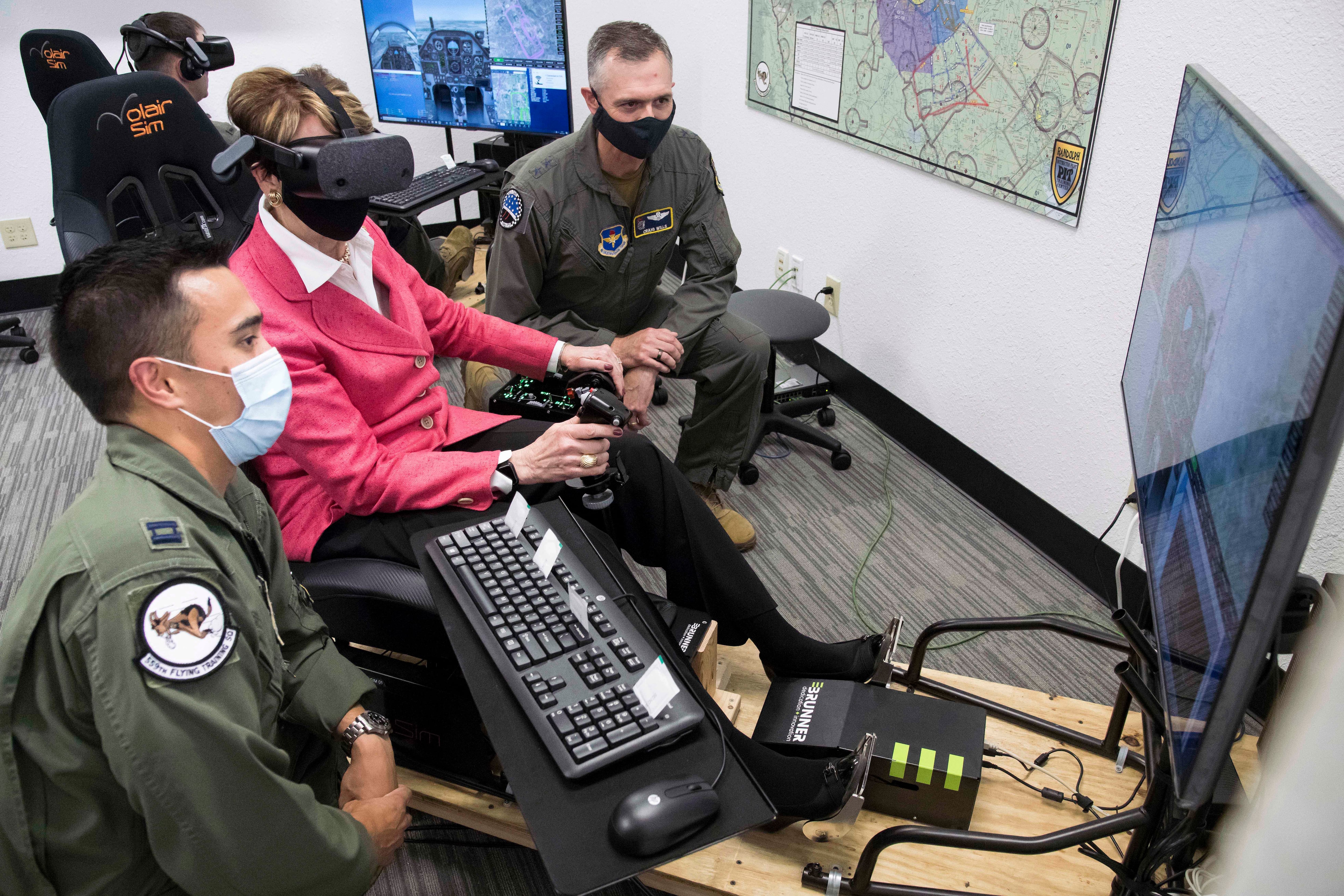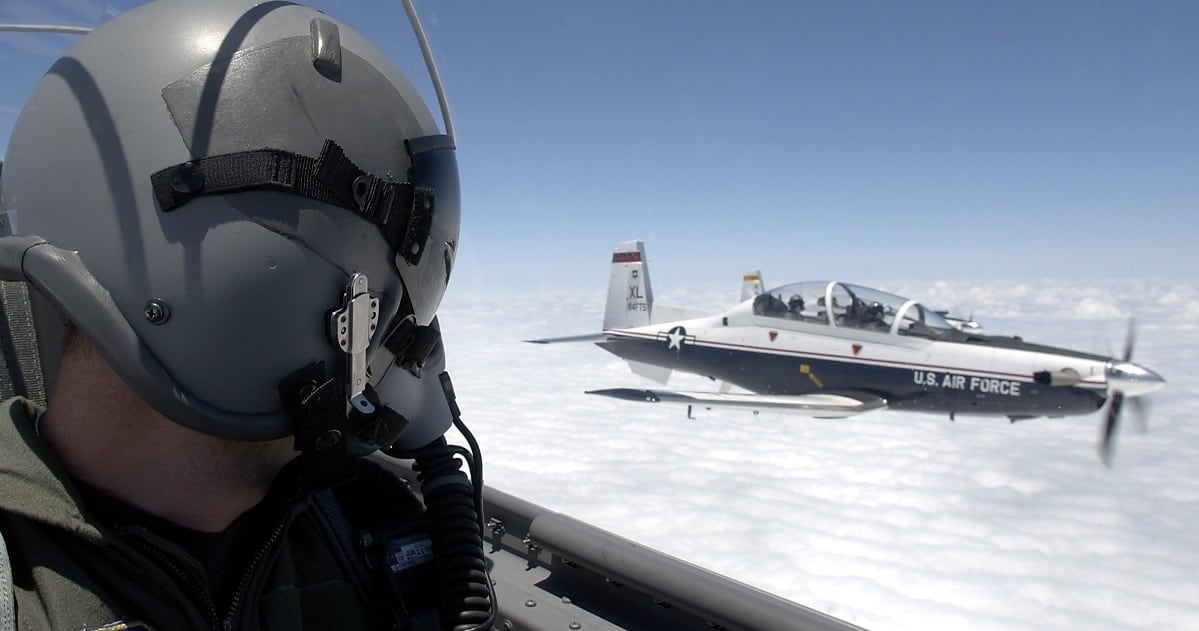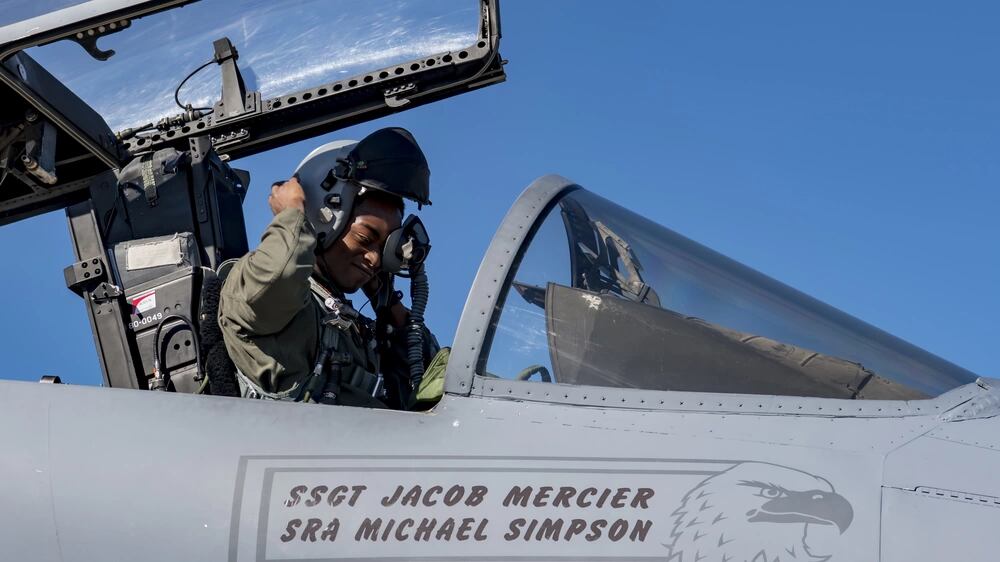ORLANDO — The Air Force aims to train around 1,470 new pilots in fiscal 2023, which remains a lofty goal amid an enduring shortage of flyers.
Though the target is close to the service’s plan to graduate 1,500 pilots per year by 2024, hitting it will be a challenge, said Air Education and Training Command boss Lt. Gen. Brian Robinson during a live taping of the “War on the Rocks” podcast here Wednesday.
“We are doing the best we can with the resourcing levels that we have, in terms of manning, weapons system sustainment, parts and supply, things of that nature,” he said.
RELATED
The service has spent the past several years modernizing that curriculum, hoping to speed up pilot production while helping airmen retain more information.
Robinson said he’s concerned about meeting the twin needs of improving flight school while also preparing for a possible conflict with a country like China or Russia. If a crisis requires the Air Force’s pilot training bases to start six- or seven-day workweeks, he said, then so be it. But that’s unlikely unless the U.S. goes to war with another world power and urgently needs more pilots.
Still, some instructors say they are struggling with a crushing workload. Flight simulator instructors are also hard to come by, with many heading to commercial airlines or other private companies even as the Air Force increasingly turns to virtual training.
A widespread ejection seat issue that required the Air Force to check hundreds of training aircraft to see whether the seats would work as intended also waylaid the enterprise this year.
RELATED

Robinson suggested it’s time to rethink the training pipeline altogether.
“Probably, I need to get away from calling it the ‘pipeline,’” he said.
“Here’s the training criteria, the competencies you need to demonstrate, and once you’ve demonstrated them, you’re on to the next piece,” Robinson said. “But … you can’t move them through without regard for the other portion of the system.”
That can cause another problem, though: an unpredictable, fluctuating volume of student pilots at various points in the program. Robinson also worries airmen won’t feel as connected to their pilot training cohort if courses are more individualized.
“Culturally, that’s a challenge. We’ve experienced some of this as we looked at Pilot Training Next,” he said, referring to the flight school program that uses iPads and other technology to streamline those lessons.
“When we think about esprit de corps and unit camaraderie and unit identification, it’s disruptive to that model,” he added.
RELATED

Still, Robinson suggested the Air Force could break its traditional undergraduate pilot training model. Students join one of several classes that start throughout the year on a rolling basis, and graduate alongside that same cohort at the end of several weeks together.
A new approach could start trainees at the same time, but group them into new graduating classes based on when they’re ready to move on.
That could give slow learners more time to learn the material before advancing to more complex aircraft, without holding back those who pick up the lessons sooner.
What matters is that operational units receive well-prepared airmen in a timely manner, not just whether an airman followed a particular training schedule, Robinson added.
RELATED

The service’s annual pilot production goals often prove elusive, as does a long-term solution for retaining experienced aviators. In practice, that shortfall means pilots are assigned to fly more missions and longer sorties instead of training or resting.
More than 12,000 pilots serve in the active duty Air Force. The service typically falls about 2,000 pilots short of its overarching goal of 21,000, including those who fly for the Air National Guard and Air Force Reserve.
“We’ll find that sweet spot that balances the quality of life for our airmen and their families and the quality of service for delivering the capability for the nation,” Robinson said.
Rachel Cohen is the editor of Air Force Times. She joined the publication as its senior reporter in March 2021. Her work has appeared in the Washington Post, the Frederick News-Post (Md.), Air and Space Forces Magazine, Inside Defense, Inside Health Policy and elsewhere.





